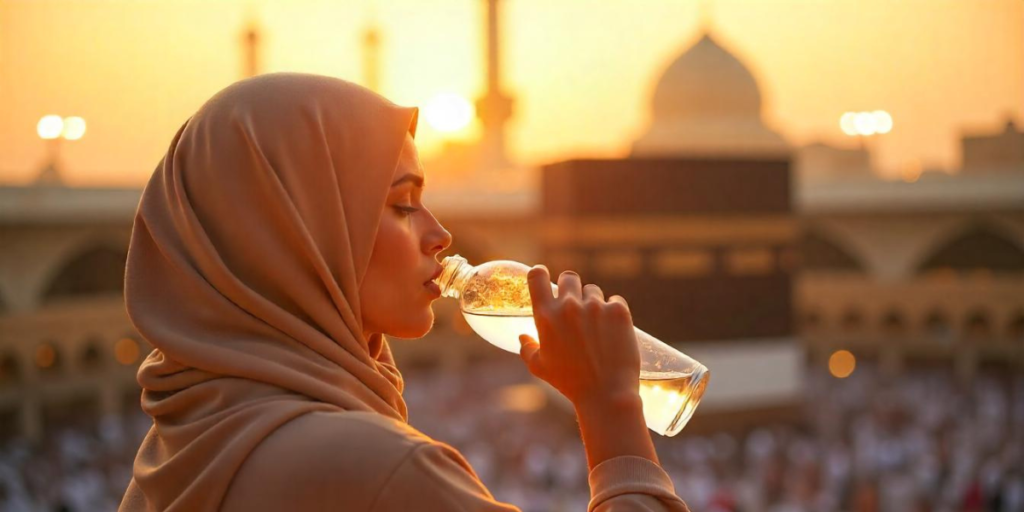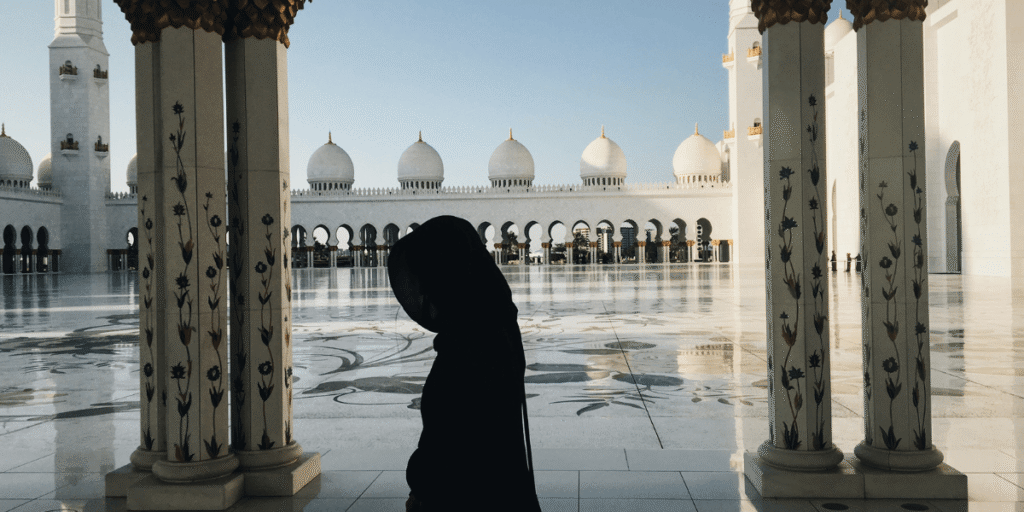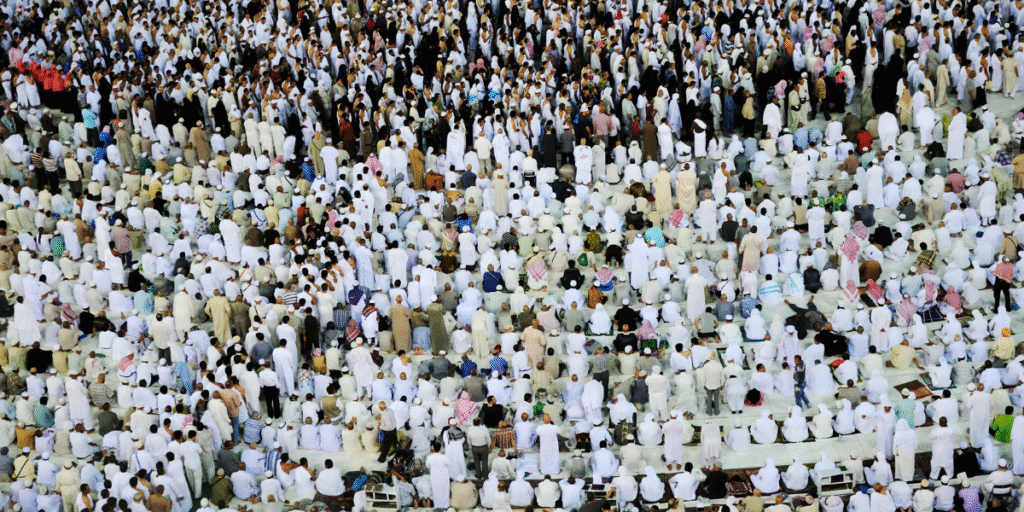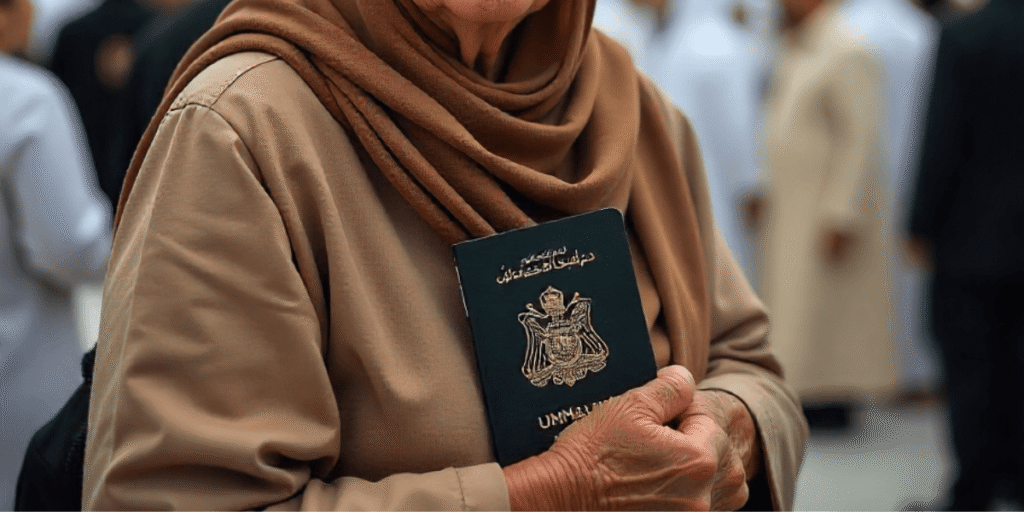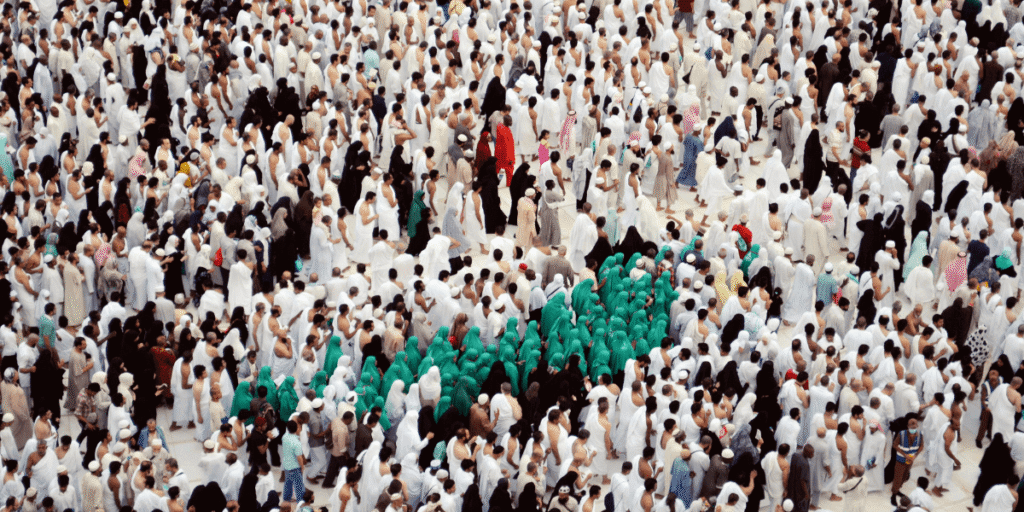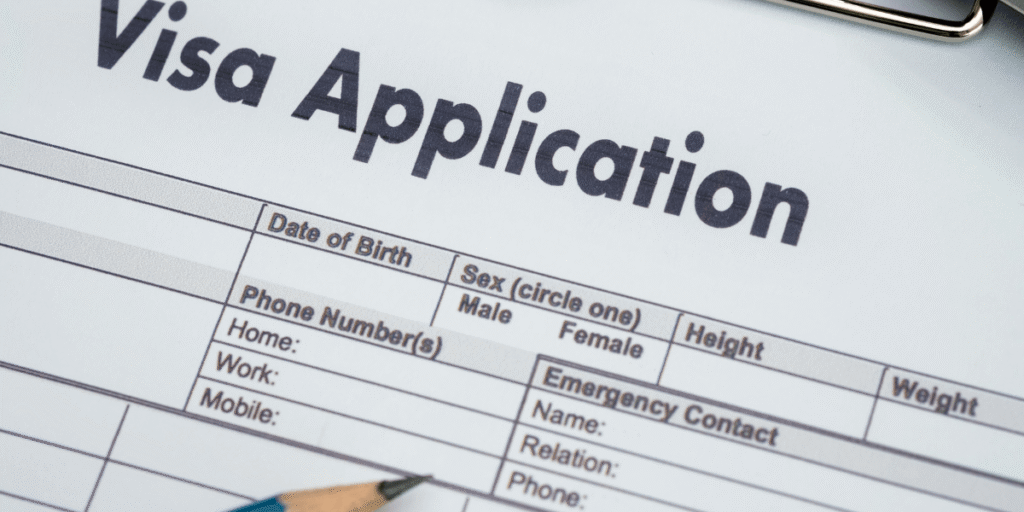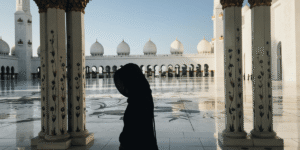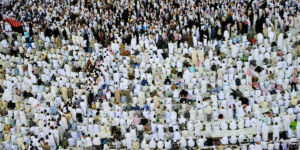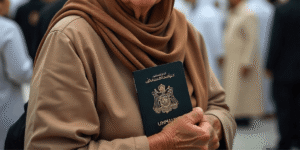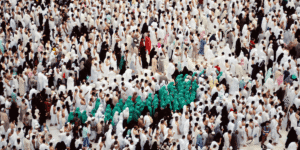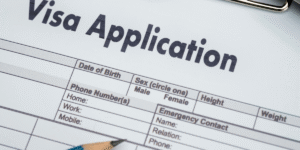Hajj is one of the most significant journeys in every Muslim’s life, and it brings millions of pilgrims together in Makkah every year. However, the Hajj these years takes place in an extremely hot climate, where temperatures can soar above 45°C. Due to prolonged outdoor exposure and physical exertion, dehydration, and heatstroke are serious risks that every pilgrim must prepare for.
For a safe and fulfilling Hajj, understanding hydration techniques and tipsand strategies to combat heat-related illnesses is very important. We have compiled this blog to discuss how to stay hydrated during Hajj and how to avoid heatstroke. These expert tips will definitely help you make the most of this sacred experience.
Understanding The Risks: Dehydration And Heatstroke
During Hajj, long hours of walking, standing, and performing rituals in extreme heat can lead to excessive sweating, causing the body to lose essential fluids and electrolytes. If not replenished, dehydration can occur, leading to dizziness, weakness, and even fainting.
In severe cases, dehydration can escalate to heat exhaustion or heat stroke, which are life-threatening conditions. Symptoms include:
- Heat Exhaustion: Excessive sweating, fatigue, nausea, dizziness, and muscle cramps.
- Heatstroke: High body temperature, confusion, rapid heartbeat, flushed skin, and loss of consciousness.
Since heatstroke is a medical emergency, it is essential to take preventive measures and recognize warning signs early.
Essential Hydration Tips During Hajj
One of the most effective ways to prevent dehydration and heatstroke is by maintaining a consistent fluid intake. Here are some key Hajj hydration tips to follow:
- Drink Plenty of Water: Aim for at least 10 to 12 glasses of water per day to replace the fluids lost through sweating. Always carry a refillable water bottle and take small sips frequently rather than drinking large amounts at once.
- Utilize Zamzam Water: Zamzam water is easily available in Makkah and is known for its purity and cooling properties. Take advantage of the free Zamzam stations throughout Masjid al-Haram to stay hydrated.
- Replenish Electrolytes: When sweating excessively, the body loses important salts such as sodium and potassium. Consider drinking electrolyte-rich beverages or using oral rehydration salts to maintain a balanced hydration level.
- Monitor Your Urine Color: A simple way to check hydration is by observing urine color. Dark yellow urine indicates dehydration, while light yellow or clear urine suggests proper hydration. If your urine is too dark, increase your water intake immediately.
- Avoid Caffeinated Beverages: Coffee, tea, and energy drinks act as diuretics, increasing urine output and leading to dehydration. Instead, opt for water, herbal teas, or fruit juices to maintain hydration levels.
How To Avoid Heat Stroke During Hajj
Apart from hydration, how to avoid heatstroke during Hajj requires proper planning and sun protection.
Wear Lightweight And Breathable Clothing
Choose loose-fitting, light-colored garments made from breathable fabrics like cotton. These allow better air circulation and reflect sunlight, reducing the risk of overheating.
Use Sun Protection
The intense Saudi Arabian sun can cause sunburn and heat exhaustion. Always wear:
- A hat or an umbrella for shade.
- UV-protective sunglasses to shield your eyes.
- Sunscreen with SPF 30+ applied generously on exposed skin.
Plan Your Activities Wisely
Avoid direct sun exposure during peak hours (11 a.m. to 3 p.m.). Whenever possible, perform Hajj rituals early in the morning or late in the evening when temperatures are lower.
Seek Shade And Rest Frequently
Standing in the sun for long periods can quickly raise body temperature. Make use of shaded areas, tents, or indoor prayer halls to cool down and rest in between rituals.
Use Cooling Methods
To keep body temperature down:
- Carry a portable fan or mist spray bottle.
- Apply a damp cloth on your forehead and neck.
- Take cool showers whenever possible.
- Recognizing and Responding to Heat-Related Illnesses.
Even with all precautions, some pilgrims may still experience symptoms of dehydration or heat exhaustion. If you notice signs of weakness, dizziness, or excessive sweating, take immediate action:
- Move to a Cooler Place: Find an air-conditioned room, shaded area, or cooling station.
- Drink Water: Sip cool water or an electrolyte solution to rehydrate.
- Apply Cooling Measures: Use cold compresses, wet towels, or fans to lower body temperature.
- Seek Medical Help: If symptoms worsen, such as confusion or unconsciousness, call for emergency assistance immediately.
Additional Tips For A Safe Hajj
- Travel Light: Carry only essentials to reduce physical strain.
- Stay Informed: Check weather updates to plan accordingly.
- Acclimate to Heat: If possible, spend time outdoors before Hajj to help your body adjust to the high temperatures.
By following these essential Hajj hydration tips and heat prevention strategies, you can complete your pilgrimage safely while focusing on your spiritual journey.
Wrapping It Up
Hajj is a deeply spiritual journey, but it also comes with physical challenges, especially due to the extreme heat. Understanding how to stay hydrated during Hajj and how to avoid heat stroke during Hajj is essential for a safe and comfortable pilgrimage. Preparation and awareness are key. Monitor your body’s signals, seek shade whenever needed, and take breaks to rest. Now that you know these expert tips, you can book Hajj from Dubai for expats via Three N Travel & Tourism LLC. We have some exceptional Hajj packages for everyone.



